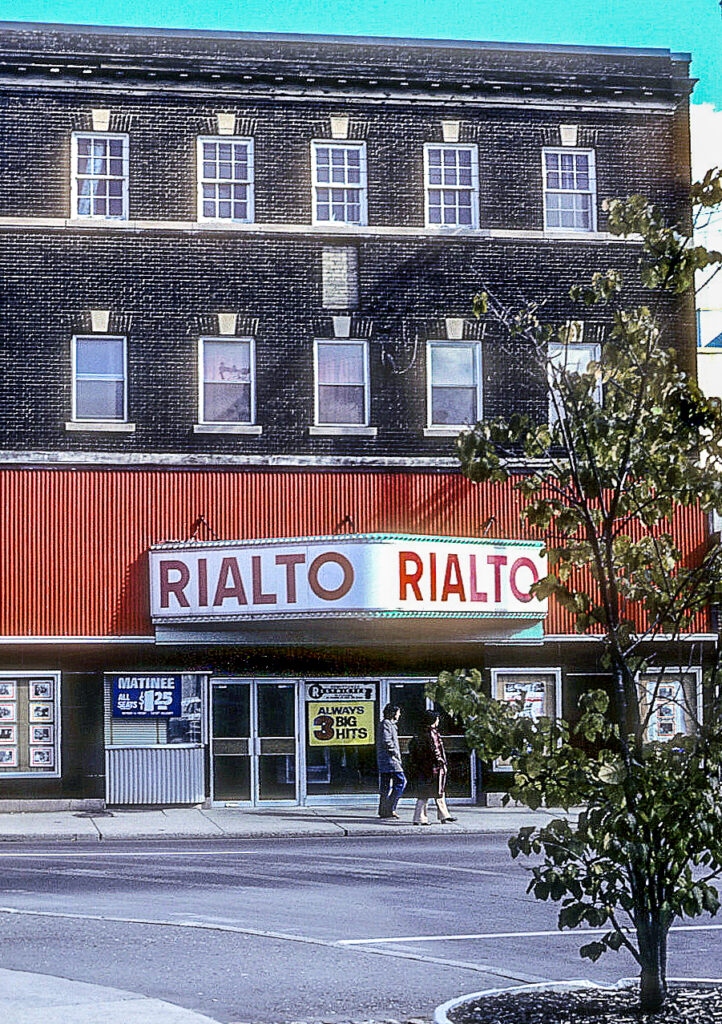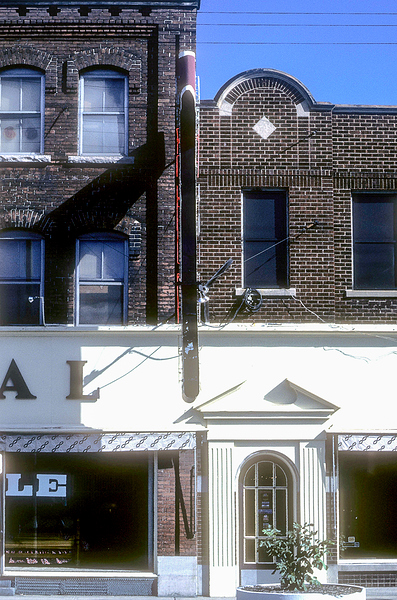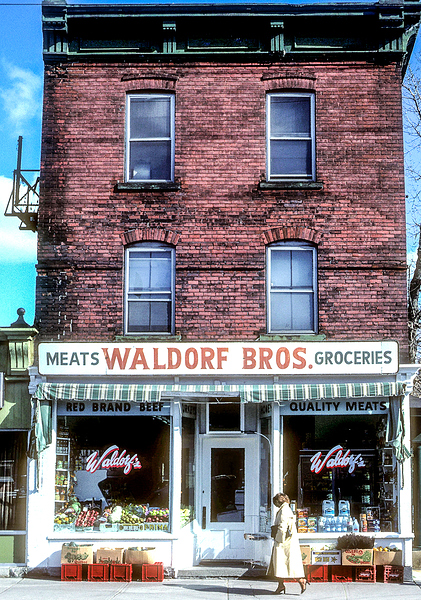Robert Smythe
This issue of Skyline looks back at iconic Bank Street places that have disappeared.
Barrymore’s Discotheque
Clad in its lurid livery, this lipstick red wall treatment is now a feverish memory. Of course, that highly festooned façade was designed for the very elaborate Imperial Theatre of 1914. From its opening on the eve of World War I, it was all downhill for this ill-fated venture.
Expensive, segregated, widely spaced first-class seating in the middle of the theatre floor bit into ticket sales and it finally closed as a third-rank house in the mid-1950s.
The building has served as a furniture store, pinball arcade, and hot dog joint. In 1971, it was turned into a strip club. To the delight of its owners, Pandora’s Box was notorious for its full-frontal nudity and in a constant and well-publicized battle with Ottawa’s Morality Squad.
Serial obscenity charges were laid but, in the end, the courts ruled in the club’s favour. It then had to contend with changing attitudes making stripping less appealing, and the City of Ottawa passing bylaws that restricted the location of adult entertainment parlours to industrial parks at the edge of the city.
In the late 1970s it was remodelled into what was meant to be Ottawa’s swankiest disco, with five bar zones for well-heeled swingers. Barrymore’s backers even compared it to New York’s Studio 54. That disco promptly died.
It then became a rock music venue – also known as Barrymore’s – which brought in many well-known acts, but eventually closed.
Now, save for a sexual paraphernalia shop and a burger spot, this once grand building is empty and, as a final indignity, most of its plaster wreathes, swags, garlands, lyres, and lions’ heads (which were falling off, threatening pedestrians walking below) have been clumsily stripped away.

The Rialto Theatre
Often referred to during its final years as the “Rat-Hole,” and home of the 50-cent double-bill Saturday matinee, the Rialto theatre opened on December 30, 1931 as a respectable 600-seat neighbourhood movie house.
It replaced an earlier theatre on this site that had been built during the silent era.
This new building, which featured a primitive form of Frigidaire cooling, was unique for Ottawa in that it contained multiple residential units above.
To accomplish this the auditorium (whose rake was sunk below grade to make room for those upper floor suites) had to be heavily sound-proofed to prevent movie soundtracks from penetrating the apartments.
The Rialto ended its days under that name running cheesy soft-core porn. Under new management in September 1980, the theatre was transformed into an art house cinema aptly known as The Phoenix. Despite a makeover installing a smaller number of newer, wider seats, the interior still retained many of its grottier aspects.
Surprisingly, this modest theatre was absorbed in the mighty Cineplex chain a few years later, but its rise from the ashes proved to be brief.
In 1988, a dubious Fire Marshal’s Order condemned the building to an immediate demolition. In its report on the rarely issued order, inspectors stated their reason as “graffiti found on the bathroom walls” in some of the upstairs apartments.
The Centretown stretch of Bank Street once boasted multiple movie houses. With the passing of this theatre with its chequered reputation, they had all vanished.
Waldorf Bros. Butchers
There had been a butcher’s shop with grocery at 399 Bank Street since 1901, originally opening as the Centretown branch of then ubiquitous provisioners George Matthews Co.
The Waldorf Brothers located here in 1950, moving from previous premises directly across the street.
You can see from the change in brickwork and slightly different upper storey window styles that, before being converted into a commercial storefront, the building had started out decades earlier as a modest two-storey gable-fronted house. Once the very quaint butcher’s shop closed, a multitude of restaurants cycled through this location.
Waldorf Bros. was perhaps part of the last flowering of rather genteel neighbourhood shops on Bank. While we are not entirely without food stores, today cheque-cashing, payday loans, vape and cannabis shops, empty derelict units, and dollar stores abound.

Colonial Furniture
It began as an industrial wood planing and turning mill at Bank and Waverley Streets in the mid-1890s. But it was elevated shortly thereafter into a furniture store designed to fill Centretown’s burgeoning supply of new houses.
In 1933 the store became Colonial Furniture which grew be Ottawa’s biggest furniture chain. Colonial was famous for its exhibition sales, timed to coincide with the Ottawa Ex, set up in giant circus tents in the rear parking lot. After expanding to all corners of the city’s suburbs, the business closed this flagship store in 1999.
Colonial’s large overhanging blade sign remained in place, and when Staples located here they were able to take advantage by getting it grandfathered and painted red, breathing life into a remnant of the old store.

Dunluce Chambers
Squeezed into the recessed entrance alcove that bisects Foster’s Sports Centre, this delicate gold lettering once announced the name and address of the rooms above, which were likely used as offices.
The building itself dates to about 1908. The reason for the naming, which is from the time of construction, is unknown.
It may have been for an association with militant Protestant Orangemen as Dunluce Castle is a medieval ruin situated in Northern Ireland. Years ago the sign disappeared.


